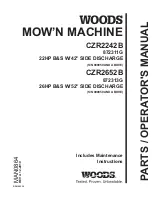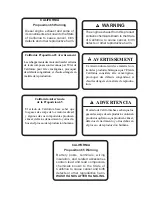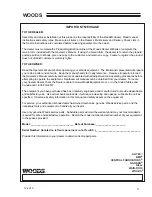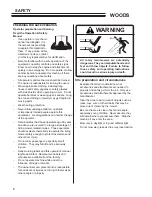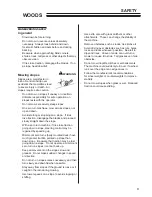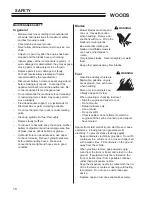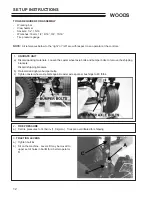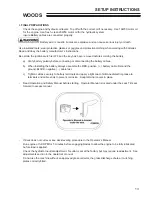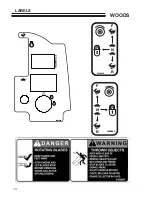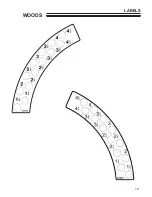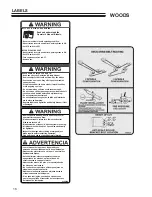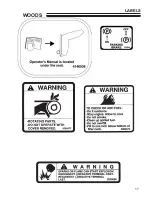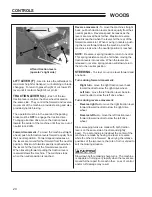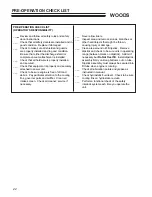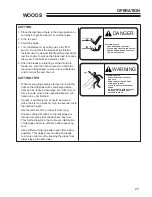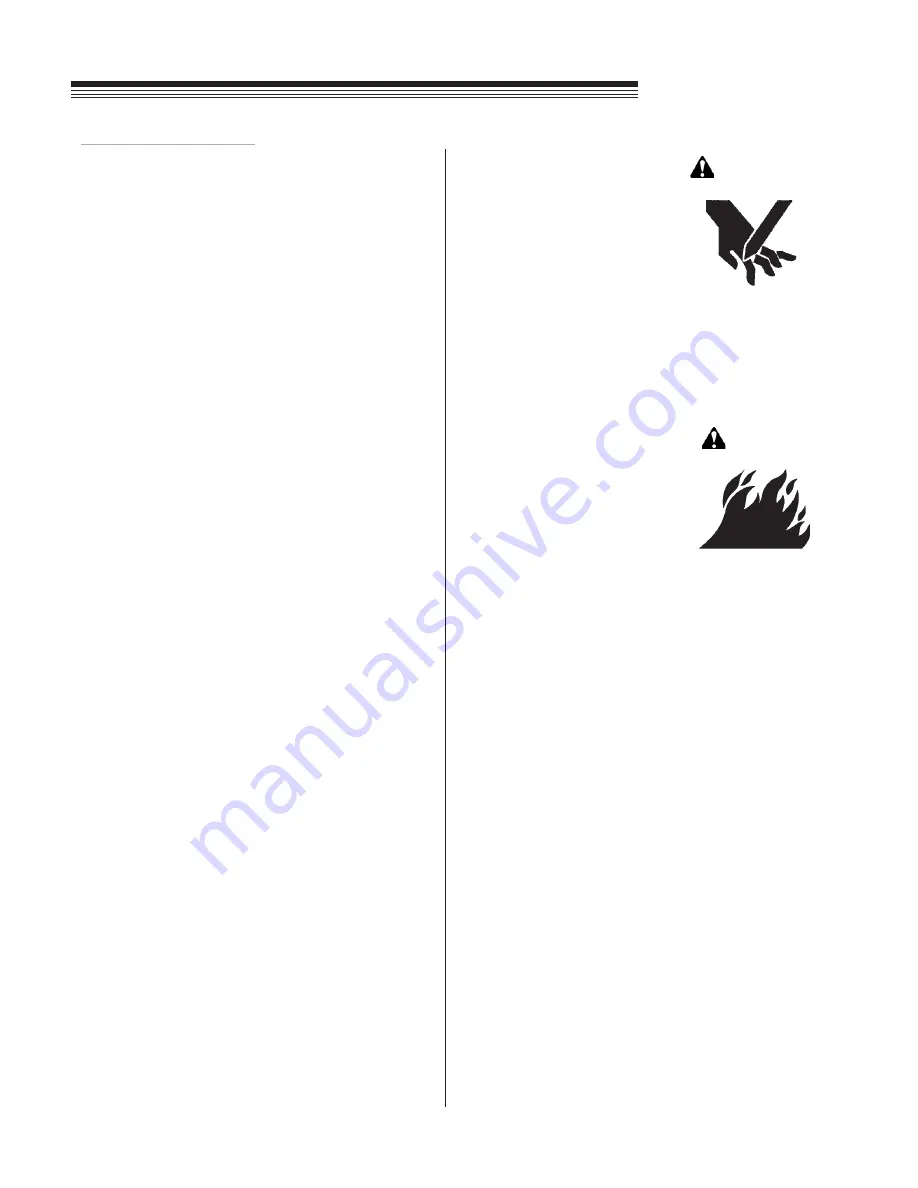
10
WOODS
SAFETY
MAINTENANCE SAFETY
In general
-
Maintain machine according to manufacturer's
schedule and instructions for maximum safety
and best mowing results.
-
Park machine on level ground.
-
Never allow untrained personnel to service ma-
chine.
-
Adjust or repair only after the engine has been
stopped and the blades have quit rotating.
-
Inspect grass catcher components regularly. If
worn, damaged or deteriorated, they may expose
moving parts or allow objects to be thrown.
-
Replace parts if worn, damaged or faulty.
For best results, always replace with parts
recommended by the manufacturer.
-
Disconnect battery or remove spark plug wire(s)
before making any repairs. Disconnect the
negative terminal first and the positive last. Re
-
connect positive first and negative last.
-
Do not dismantle the machine without releasing
or restraining forces which may cause parts to
move suddenly.
-
Provide adequate support, e.g. jackstands for
lifted machine or parts if working beneath.
-
Do not put hands or feet near or under rotating
parts.
-
Clean up spilled oil or fuel thoroughly.
- Replace faulty mufflers.
- To reduce fire hazards, keep the engine, muffler,
battery compartment and fuel storage area free
of grass, leaves, debris buildup or grease.
- Hydraulic fluid can penetrate skin, use paper
to check for leaks. Relieve hydraulic pressure
before disconnecting hoses. Make sure
connections are tight and hoses are in good
condition.
Blades
-
Mower blades are sharp and
can cut. Use extra caution
when handling. Remove ob-
structions with care. Wrap the
blade(s) or wear gloves.
-
Be aware that rotating one
blade on multiblade mowers
can cause other blades to
rotate.
-
Only replace blades. Never straighten or weld
them.
-
Keep other persons away from blades.
Fuel
-
Gasoline and diesel fuels are
flammable; gasoline vapors
are explosive. Use extra care
when handling.
-
Store only in containers spe-
cifically designed for fuel.
-
When refueling or checking fuel level:
- Stop the engine and allow to cool;
- Do not smoke;
- Refuel outdoors only;
- Use a funnel;
- Do not overfill;
- If fuel is spilled, do not attempt to start the
engine until the spill is cleaned up and vapors
have cleared.
Sparks from static electricity can start fires or cause
explosions. Flowing fuel can generate static
electricity. To prevent static electricity sparks:
- Keep containers electrically grounded. Do not fill
containers in a vehicle or on a truck or trailer bed
with a plastic liner. Fill containers on the ground
away from the vehicle.
-
When practical, remove gas powered equip-
ment from the truck or trailer and refuel it on the
ground. If equipment must be refueled on the
truck or trailer, refuel from a portable container
rather than a dispenser nozzle.
-
Keep the dispenser nozzle in contact with the rim
of the fuel tank or container opening until fueling
is complete. Do not use a nozzle lock-open
device.
-
Replace caps on fuel cans and tanks securely.
WARNING
WARNING
Summary of Contents for 872311G
Page 15: ...15 WOODS LABELS...
Page 17: ...17 WOODS LABELS...
Page 40: ......
Page 41: ...41 WOODS PARTS SECTION PARTS SECTION...
Page 44: ...44 WOODS 15 24 17 45 45 42 FIGURE 2 TRANSAXLE ASSY...
Page 52: ...52 WOODS FIGURE 6 CASTER ASSEMBLY...
Page 56: ...56 WOODS FIGURE 8 STEERING...
Page 58: ...58 WOODS FIGURE 9 PARKING BRAKE...
Page 66: ...66 WOODS FIGURE 13 BELTS CUTTERDECK...
Page 70: ...70 WOODS FIGURE 16 ACCESSORIES SUSPENSION SEAT 4 3 1 1 2 6 7 5...

